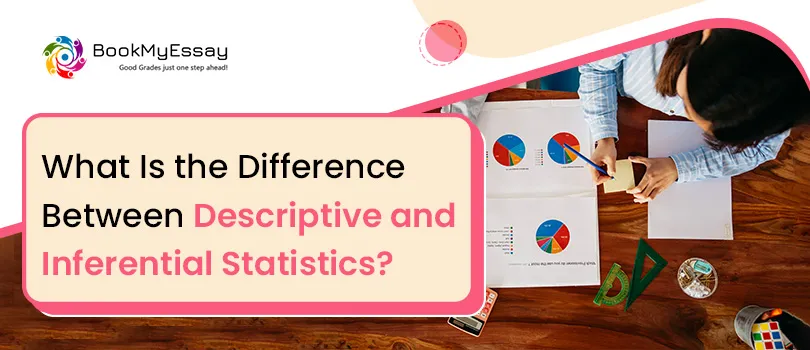When analyzing data in research or real-world scenarios, two core branches of statistics come into play: descriptive statistics and inferential statistics. Understanding the Difference Between Descriptive And Inferential Statistics is crucial for students, researchers, and data analysts alike. Descriptive statistics summarize and present data in a meaningful way, while inferential statistics allow predictions and generalizations beyond the data itself. These two statistical approaches serve different purposes but work together to help us make informed decisions. If you're struggling to grasp these concepts, expert guidance from platforms like BookMyEssay can simplify complex statistical topics for better academic performance.
Descriptive Statistics: Understanding the Basics
Descriptive statistics involve methods for organizing, displaying, and describing data using numbers, tables, and graphs. It provides simple summaries about the sample and the measures. For example, calculating the mean, median, mode, and standard deviation of a dataset are all part of descriptive statistics. It doesn’t make conclusions or predictions—it just describes what’s in front of us. For instance, a survey of 100 students’ test scores could be summarized using a histogram and average score without predicting anything about the wider population.
Inferential Statistics: Going Beyond the Data
On the other hand, inferential statistics involve using data from a sample to make inferences or generalizations about a larger population. This branch of statistics employs techniques like hypothesis testing, confidence intervals, and regression analysis. Inferential statistics help answer questions like, "What are the chances that this result would occur in a larger group?" It’s commonly used in scientific research where analyzing an entire population isn't feasible. For example, by analyzing a sample group’s behavior, researchers can infer trends about a national population.
Key Difference Between Descriptive And Inferential Statistics
- Purpose: Descriptive statistics are used to describe data, while inferential statistics help make predictions or test hypotheses.
- Data Focus: Descriptive deals only with the collected data; inferential tries to draw conclusions beyond the immediate data.
- Techniques Used: Descriptive uses measures of central tendency and dispersion; inferential includes correlation, regression, and hypothesis testing.
- Application: Descriptive is ideal for presenting data; inferential is essential for research and forecasting.
If you're unsure when to use each or how they work together, expert services like BookMyEssay can help with personalized assistance on statistical assignments.
Common Confusion: Difference Between Reliability And Validity
While discussing statistics and research, many also mix up the Difference Between Reliability And Validity. Reliability refers to the consistency of a measure—will it give the same result under the same conditions? Validity, on the other hand, concerns whether the test actually measures what it claims to measure. Both are essential in ensuring data quality, especially when making inferences from statistical analysis.
Conclusion
Understanding the Difference Between Descriptive And Inferential Statistics is foundational for any data-driven field. While descriptive statistics help us understand what data says, inferential statistics enable us to apply that understanding more broadly. At the same time, knowing the Difference Between Reliability And Validity ensures your research methods stand up to scrutiny. For students needing help in these areas, BookMyEssay provides trusted academic support tailored to your specific coursework and challenges.






 3 Bellbridge Dr, Hoppers Crossing, Melbourne VIC 3029
3 Bellbridge Dr, Hoppers Crossing, Melbourne VIC 3029



